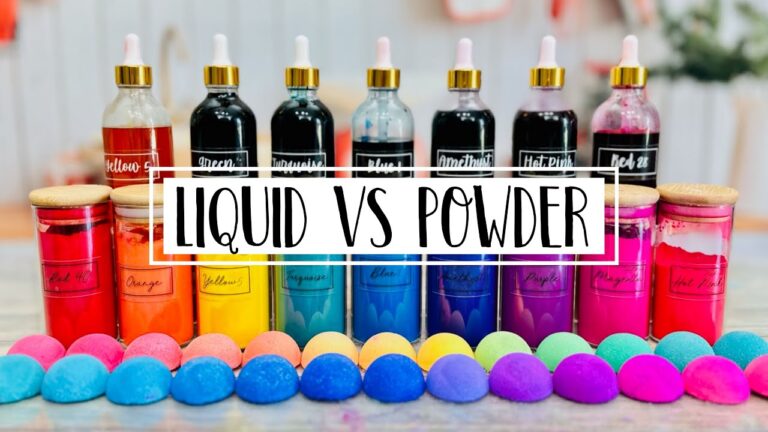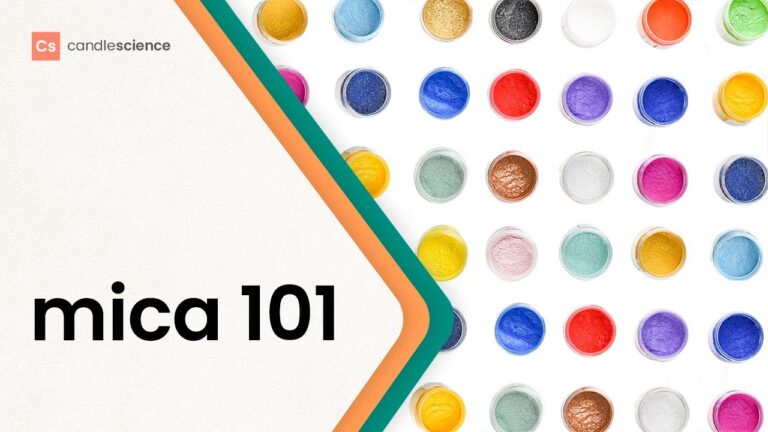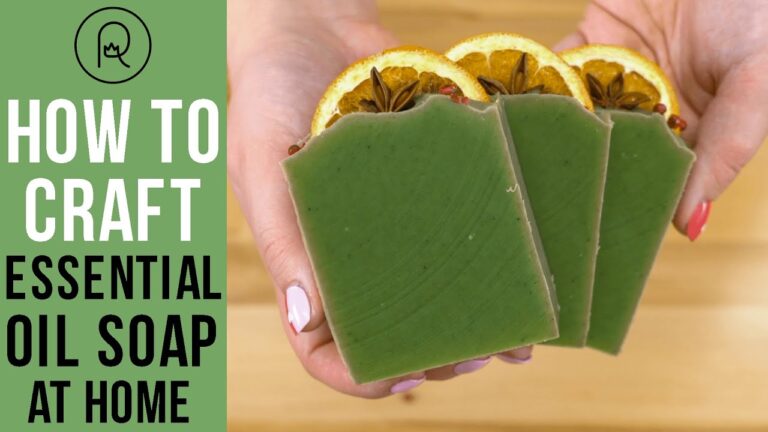Are you tired of using the same old soap colors? It’s time to spice up your soap-making game with the color wheel! Understanding how to use the color wheel for soap dye selection can take your creations to the next level. Whether you’re a seasoned soap maker or just starting out, this guide will help you choose the perfect hues for your next project. Say goodbye to boring bars and hello to vibrant, eye-catching soaps that will stand out on any shelf.
What is a color wheel and how does it help with selecting soap dyes?
A color wheel is a visual tool that organizes colors in a circular format based on their relationships to one another. It consists of primary colors (red, blue, yellow), secondary colors (orange, green, purple), and tertiary colors (mixtures of primary and secondary colors). By using a color wheel, you can easily identify complementary colors (opposite on the wheel), analogous colors (next to each other), and triadic colors (equally spaced around the wheel), which can help in creating harmonious color schemes.
When selecting soap dyes, a color wheel can be a valuable resource for choosing the right colors to achieve your desired results. By understanding color relationships, you can create visually appealing soap designs that are balanced and pleasing to the eye. For example, if you want to create a soap with a calming and soothing vibe, you may choose analogous colors like blue and green. On the other hand, if you want a soap with a bold and vibrant look, you may opt for complementary colors like red and green. Ultimately, the color wheel serves as a guide to help you make informed decisions when selecting soap dyes, leading to more successful and visually appealing soap creations.
Can I use any color wheel for selecting soap dyes, or is there a specific one designed for this purpose?
When choosing soap dyes, it is important to consider using a color wheel specifically designed for this purpose. A soap dye color wheel will provide a range of colors that are specifically formulated for use in soap making, ensuring that the final product will have vibrant and long-lasting colors. By using a color wheel designed for soap dyes, you can confidently create beautiful and visually appealing soaps without worrying about color stability or compatibility issues.
While any color wheel may seem like a suitable tool for selecting soap dyes, using one designed for this specific purpose will yield the best results. A soap dye color wheel takes into account the unique properties of soap making, such as pH levels and fragrance oils, to ensure that the colors chosen will not alter or fade during the soap making process. By using a color wheel tailored to soap dyes, you can easily select complementary colors and create stunning soap creations that are both visually striking and long-lasting.
Are there any rules or guidelines to follow when using a color wheel for soap dye selection?
When it comes to selecting soap dyes using a color wheel, there are several rules and guidelines to keep in mind. One fundamental rule is to consider complementary colors, which are located opposite each other on the color wheel. This means that selecting dyes that are opposite each other on the color wheel can create a striking contrast and vibrant color combination in your soap. Another important guideline is to consider analogous colors, which are located next to each other on the color wheel. Using these colors in combination can create a harmonious and cohesive color scheme in your soap design.
In addition to complementary and analogous colors, it’s also important to consider the intensity of the colors you choose. The color wheel can help you understand the concept of tints, shades, and tones. Tints are created by adding white to a color, while shades are created by adding black, and tones are created by adding gray. Understanding how to adjust the intensity of colors can help you create a balanced and visually appealing soap design. Lastly, when using a color wheel for soap dye selection, it’s important to consider the psychological effects of different colors. For example, warm colors like red and orange can create a sense of energy and excitement, while cool colors like blue and green can create a calming and soothing effect in your soap design.
In summary, there are several rules and guidelines to follow when using a color wheel for soap dye selection. By considering complementary and analogous colors, understanding color intensity, and being mindful of the psychological effects of different colors, you can create beautiful and visually appealing soap designs. Using the color wheel as a tool can help you make informed and creative choices when selecting soap dyes, ultimately leading to stunning and eye-catching results.
Can a color wheel help me create unique and appealing color combinations for my soap products?
Yes, a color wheel can definitely help you create unique and appealing color combinations for your soap products. By understanding the relationships between colors on the wheel, such as complementary, analogous, or triadic, you can easily create harmonious and visually striking combinations. For example, pairing complementary colors like blue and orange can create a vibrant and eye-catching contrast, while using analogous colors like green, yellow, and orange can create a soothing and cohesive look.
Experimenting with different color schemes on the color wheel can help you discover new and exciting combinations that will set your soap products apart from the rest. Whether you’re looking to create a bold and dramatic look or a soft and elegant aesthetic, the color wheel is a valuable tool that can guide you in choosing the perfect colors for your unique soap creations. So don’t be afraid to play around with different combinations and see how a color wheel can elevate the visual appeal of your soap products.
Unlock the Secrets of Soap Dye Selection with the Color Wheel
Are you looking to elevate your soap-making game? Look no further than the color wheel! Understanding the principles of color theory can help you unlock the secrets of soap dye selection. By using complementary colors, analogous colors, or triadic color schemes, you can create visually stunning and harmonious soap designs that are sure to impress.
When selecting soap dyes, it’s important to consider the mood or message you want to convey with your soap. Warm colors like reds, oranges, and yellows can create a sense of energy and vitality, while cool colors like blues, greens, and purples can evoke feelings of calm and tranquility. By strategically combining different hues and tones, you can create a soap that not only looks beautiful but also resonates with your customers on a deeper emotional level.
Experimenting with different color combinations can be a fun and rewarding process. Don’t be afraid to step outside your comfort zone and try something new. With the help of the color wheel, you can confidently choose the perfect soap dyes to bring your vision to life. So go ahead, unleash your creativity and unlock the secrets of soap dye selection with the color wheel today!
Elevate Your Soap Making Skills with the Perfect Dye Choices
Elevate your soap making skills by choosing the perfect dye colors to enhance your creations. Whether you prefer vibrant hues or subtle pastels, selecting the right dye can take your soap designs to the next level. Experiment with different shades and combinations to create unique and eye-catching soaps that stand out from the rest. With the right dye choices, you can transform your soap making hobby into a creative and visually stunning art form.
Incorporating the principles of the color wheel into your soap dye selection can elevate the visual appeal of your products. By understanding the relationships between colors and how they interact, you can create stunning and harmonious designs that are sure to captivate your customers. So, next time you’re choosing soap dyes, take a moment to consult the color wheel and let it guide you towards creating truly eye-catching and dynamic soap creations.



